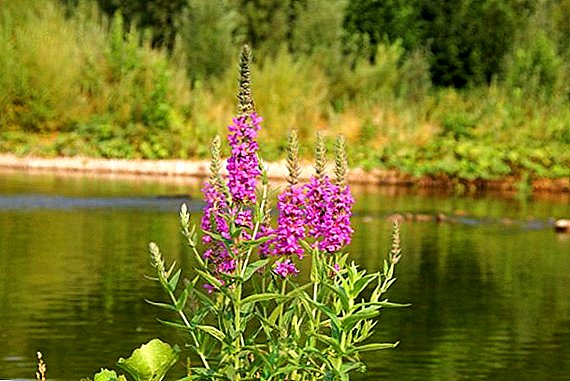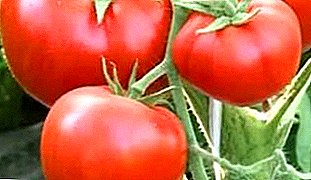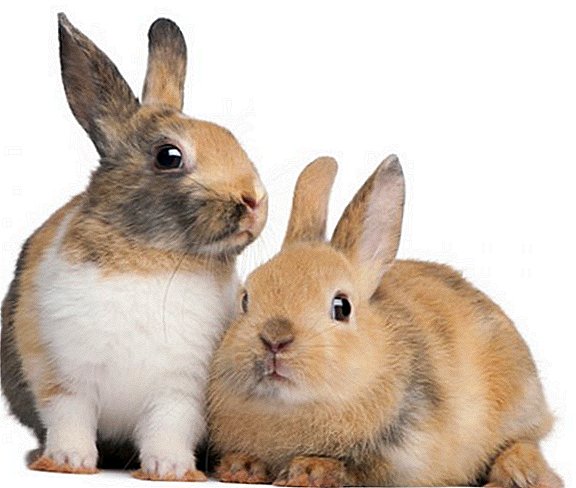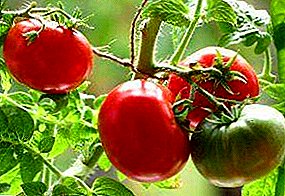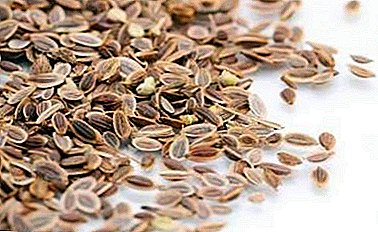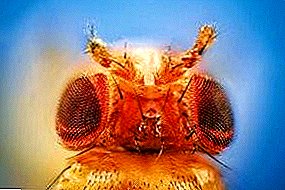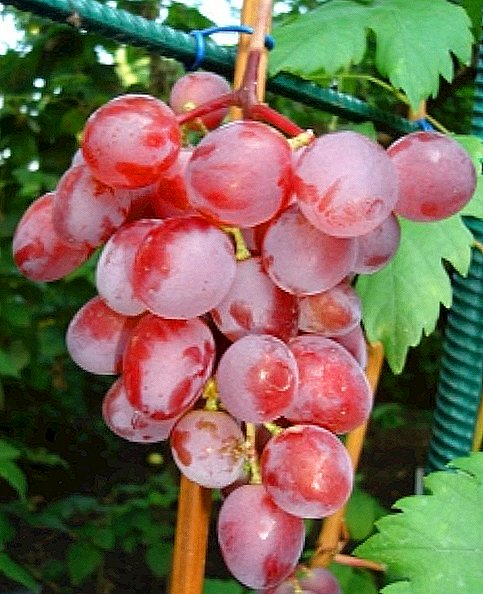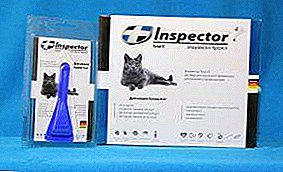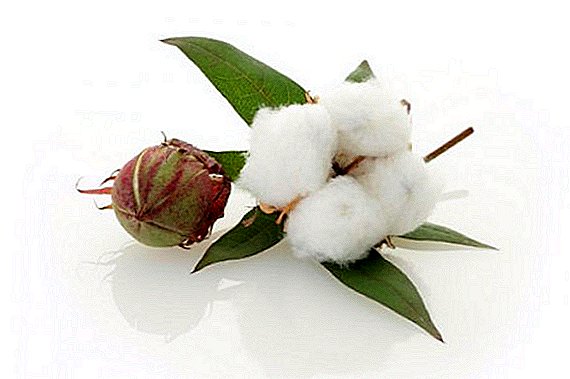 Among all industrial crops are spinning. Of course, the large-scale specialized farms hold the first place in their cultivation, but the owners of large summer cottages are gradually catching up to them. Many are interested in the process of obtaining cotton. We find out more about what cotton is and how it looks like.
Among all industrial crops are spinning. Of course, the large-scale specialized farms hold the first place in their cultivation, but the owners of large summer cottages are gradually catching up to them. Many are interested in the process of obtaining cotton. We find out more about what cotton is and how it looks like.
Short description
This is a common name for a biological genus that unites more than 50 plant species. Their distribution began simultaneously with two foci - India and America.  All representatives of this culture are herbaceous one- or two-year-olds. In height they can reach 2 m. The core rhizome is well developed, goes to a depth of more than 30 cm.
All representatives of this culture are herbaceous one- or two-year-olds. In height they can reach 2 m. The core rhizome is well developed, goes to a depth of more than 30 cm.
On the woody stem below, in the process of growth, side branches (8-15) are launched. Branches are divided into growth and fruit. The first are located at the bottom of the stem and started at an acute angle. Fruit go above them, the angle of inclination is smaller. It is on them after the appearance of flowers fruit boxes are formed.  Leaves in the form of 3 or 5 lobes are strictly alternate, with oblong petioles visible on them. In the early varieties, the fruit branches grow from the sinuses of 3-4 leaves, while in later varieties they appear at 5-7 in a row.
Leaves in the form of 3 or 5 lobes are strictly alternate, with oblong petioles visible on them. In the early varieties, the fruit branches grow from the sinuses of 3-4 leaves, while in later varieties they appear at 5-7 in a row.
Important! Cotton is very thermophilic. The seeds germinate most quickly at + 22 ° C ... + 24 ° C, whereas for normal budding and flowering you need + 25 ° C ... + 30 ° C.
Large single flowers of different color (most often white or yellow) have a halo of 3-5 petals and a double-toothed calyx, around which a large three-lobed wrapper is started. In July-September you can see how the flowers open in the morning, and closer to dinner they turn red a little (you can see the effective cotton blossoms in the photo).  After the color changes to purple, the flowers dry and fall off. In September and October, box-shaped fruits of oval or round shape ripen. There can be up to 200 such fruits on one bush.
After the color changes to purple, the flowers dry and fall off. In September and October, box-shaped fruits of oval or round shape ripen. There can be up to 200 such fruits on one bush.
When ripe, the box cracks and crumbles, 5-10 oval seeds fall out of it, covered with fibers 5-45 mm long. From one box remove from 2 to 10 g of raw.
Relatives of cotton from the Malvaceae family are Mallow, Stockrose, Hibiscus.
In the agricultural turnover, the most important are four types of cotton:
- ordinary (he is Mexican);
- Peruvian;
- tree;
- grassy.
 The choice of variety depends on the conditions of the area, where they grow a specific type of cotton. In the European part, the Transcaucasus and Central Asia, they traditionally cultivate an ordinary line with a high stem and short fibers. The remaining species for our latitudes are considered "exotics."
The choice of variety depends on the conditions of the area, where they grow a specific type of cotton. In the European part, the Transcaucasus and Central Asia, they traditionally cultivate an ordinary line with a high stem and short fibers. The remaining species for our latitudes are considered "exotics."Did you know? Genetically modified varieties are not only bred, but are actively cultivated. For example, in Australia, their share in crops is more than 80%, and farmers reached this milestone in 2004.
Place in the rotation
The key to a good harvest is the use of alfalfa in crop rotation. This culture improves soil composition, helps to accumulate humus. After its landing, the ground gets good drainage, normal air circulation in the upper layer.
Such a "multi-field" looks like this: 6-7 fields for cotton are "prepared" by 2-3 alfalfa massifs. If alfalfa is not planted, do not worry: any grain and legumes are considered good predecessors in the area. This also applies to sugar beets with corn. 
Preparatory work
Before sowing, you should learn more about where, on which soils, cotton grows best.
The ideal option would be the land without salt "traffic jams." Groundwater should be buried deeper - waterlogging is undesirable. The soil will have to be brought to the desired condition from the autumn, in several stages.
Important! Crop rotation in the case of cotton is much more profitable monocultural cultivation. Agronomists calculated that in case of a “change” with alfalfa, about 20% of the total water consumption and as much as 35% of fertilizers are saved on care.
Soil preparation
Such events are reduced to the following actions:
- At the end of August and beginning of September, the land allotted for crops is sheared. This is done after harvesting alfalfa. At the same time, the plow is deepened slightly, by 5-6 (on heavy soils - up to 10) see. It is necessary to remove the remaining seeds and weeds.
- This is followed by the main autumn plowing. The plowshares of a two-tier plow are set to a depth of 40 cm.
- In parallel with plowing, herbicide treatment may be used. The method of burning the weed and its rhizomes is used quite rarely.
- Salted soil is additionally washed and loosened again (with a plow or a cultivator).
- The spring cycle begins with a two-leg harrowing. In regions with mild weather it is made in the second decade of February.
- Weak soil is fed with manure followed by plowing.
- The final stage is a “passage” by a cultivator at a depth of 5-8 cm.
Many farmers spend the winter watering, which compacts the soil. After such a moisture in the spring (even before harrowing), chiseliness is surely done. This is a technique of landless plowing at a depth of 8-15 cm with the subsequent entry of the harrow. 
Seed preparation
In the course is high-quality, conditional seed material collected for frost. Only zoned varieties give a stable harvest - “exotic” people hardly survive.
Preparations are pretreated by mechanical or chemical means. The first is to remove the pad (partial or full). "Chemistry" is reduced to the treatment with vapors of hydrochloric or sulfuric acids.
Did you know? Cotton got to Europe rather late - the Greeks were the first to try it in 350 BC. In India, they began to cultivate a useful plant in the 7th century BC, although the Egyptians, who mastered its processing as early as the middle of the 3rd millennium BC, are considered the pioneers.
Important and air-heat heating:
- Seeds hold on the air for 20-30 days.
- For disinfection take trichlorophenol copper or 65% fentiuram (not more than 12 kg / 1 t).
- Just before sowing, they are soaked in water for 9-10 hours. This technique is often replaced by moistening (3 treatments with an interval of 8-12 hours). In this case, 1–6 tons of material takes 500–600 l of water.
When the preparations are finished, you need to wait for the heat and start sowing. 
Sowing seeds
The optimum soil temperature for successful sowing is at least + 12 ° C ... + 14 ° C. You should not hurry - in the cold soil the seeds will simply die.
The seeding pattern depends on the chosen method, but in any case, the row spacing is no less than 60 cm. Here are examples of such schemes:
- 60x25 (ideal for the dotted mode);
- 60x45 for rectangular-nested;
- 60x60 with square-cluster method;
- apply wide-row crops at the rate of 90x15 ("step" can be increased to 20 or 30 cm).
Important! The crop itself depends on the sowing parameters. Thus, the labor-consuming ridge method (with the removal of the top layer of land of 5 cm) gives the weight gain to the basic collection of 3 quintals per hectare.
In the well placed 2-3 seeds, the embedment depth for ordinary gray soils is 4-5 cm (on the meadow or marsh take smaller: 3-4 cm).
The consumption rate depends on the chosen method, but it is selected so as to exclude thinning in the period of plant growth. This figure can vary from 40 to 70 kg / ha. Bare seeds require much less than pubescent - for example, 40-42 kg of “clean” seeds are needed for 1 hectare, while “fluffy” for the same area you need at least 60 kg. Plant density - from 80 to 120 thousand / ha.  Rows are immediately treated with 80% coranoil. 1.5-3.5 kg of this product are added to 100 l of water (hectare norm), and the mixture is sprayed with a wide (30 cm) stripe.
Rows are immediately treated with 80% coranoil. 1.5-3.5 kg of this product are added to 100 l of water (hectare norm), and the mixture is sprayed with a wide (30 cm) stripe.
Care of crops
With the sowing everything is clear, now is the time to see how the already “taken” cotton is growing and what care for it amounts to.
Watering moderate is required, both conventional hoses and sprinkling are suitable. For normal growth of the roots, 2 irrigation is done: the first when 3-5 leaves appear, and the second 20-25 days later, at the budding stage. Flowering and the appearance of fruits require more thorough wetting: 6-7 "cubes" per 1 "weave" plantations. The last moistening is done no later than 5-7 days before the leaves fall.
Did you know? Examining the fabric, taken from the tombs of the Pharaohs, the experts found that their density is equal to 500 threads per inch. That is, they are denser than modern textiles (350 n / inch)!Equally important and cultivationwhich is done in several receptions per season:
- The first - to a depth of 8-10 cm (as soon as shoots appeared).
- The next "call" before the first watering.
- As the soil dries after watering.
For the passage in the middle of the aisle, 12-15 cm are set, at the nests - the same 8-10 cm.  For mulching almost any coverage is suitable. Of course, the preferred "organic". The most popular natural shelter remains manure-speck. It perfectly retains moisture, but it also has a drawback - high consumption (25 kg per "weave" of crops). Straw is suitable for small areas, but farmers usually avoid mowed grass because of the risk of pests.
For mulching almost any coverage is suitable. Of course, the preferred "organic". The most popular natural shelter remains manure-speck. It perfectly retains moisture, but it also has a drawback - high consumption (25 kg per "weave" of crops). Straw is suitable for small areas, but farmers usually avoid mowed grass because of the risk of pests.
Weed control also includes the treatment of herbicide formulations. When choosing such tools it is worth considering the age of the plants, the phase of its growth and weather conditions.
The same applies to pests. Shovels and mites, aphids and moths are not always sensitive to weak solutions, whereas strong "chemistry" is bad for plants and soil. As far as possible, such treatments are avoided. Helps and the timely destruction of severely affected bushes.
Fertilization
Cotton needs feedings and responds well if they are made correctly. Here are the main stages of seasonal feeding:
- Manure application for pitting (at least 1 ton will be required for 1 hectare). It is often replaced with compost in the same doses. Be sure to add phosphorus oxide (20 kg) and potassium (55-60 kg). Such treatment is especially effective on weak soils or when cereal precursors.
- The first vegetative dressing falls on the leaf growth phase. At 15-17 cm from the row and below 2-4 cm from the irrigation hole, nitrogen is applied (35-50 kg / ha).
- During the budding potassium compounds come into play (50-60 kg of potassium oxide will suffice). But more are already retreating - no less than 22 cm from the row, going down at least 4 cm from the "waterline".
- Flowering is a specialization of phosphorus, usually take 25-27 kg.
Important! Nitrogen is advised to make fractional shares: 25% of the annual rate before sowing, and the remainder - evenly distributed between sowing and seasonal supplements.
Harvest
Collection takes place in September-October. Boxes (especially in large areas) ripen and open unevenly, so you have to resort to different methods.  When at least 2 boxes on all branches are opened on the bulk of the plants, they make defoliation. It is nothing like removing the leaves before collecting. The benefit of such a procedure is that it prevents the spread of diseases and pests that nest on sheets.
When at least 2 boxes on all branches are opened on the bulk of the plants, they make defoliation. It is nothing like removing the leaves before collecting. The benefit of such a procedure is that it prevents the spread of diseases and pests that nest on sheets.
To do this, apply these tools:
- A mixture of sodium silicofluoride and calcium cyanamide in a ratio of 2: 1. Cyanamide with no more than 40 kg / ha.
- Magnesium chlorate (9-10 kg / ha).
- Chlorate-chloride calcium, which is somewhat slower.
Did you know? Comparing the data on the cultivation of this crop and the production of textiles, statistics have calculated that each inhabitant of the planet uses at least 7 kg of cotton per year.
When preparing for processing, keep in mind that all desiccants, with the exception of cyanamide, dry the plants strongly. All these solutions stimulate the growth of the bolls, thereby "pushing" low-growth bushes.  The cleaning itself is carried out either manually or by machine. The technique is used only after at least 55-60% of the fruit has opened.
The cleaning itself is carried out either manually or by machine. The technique is used only after at least 55-60% of the fruit has opened.
With normal care, about 27-30 centners of raw material are removed per hectare.
Important! When leaving, inter-row cultivation is bilateral. If you neglect this, the roots simply "clogged."
Recycling
Having found out how and with the help of what measures valuable cotton is grown, we proceed to the final stage.
Raw material processing is a long and laborious process. It involves both specialists and a number of technical means.  In short, the path from collection to receiving textiles looks like:
In short, the path from collection to receiving textiles looks like:
- Raw materials are taken to the collection points or directly to the company. The first step is collecting folded on a dry flat ground.
- After harvesting cotton is a mixture of fibers and seeds, on which a lot of dirt has adhered. In special drums, fibers are separated from any impurities.
- Then the longest fiber is chosen (at least 20 cm). This is already pure material. Raw materials longer than 25 cm are considered to be of high quality, they are allowed on clothes, thin linen and bedding. Shorter ones are future cotton wool and components of explosives.
It looks seemingly simple, but in fact it is a very hard work requiring expensive devices.
Now, cotton care is no secret to our readers. We hope the sowing process will not be difficult. Good yields!



